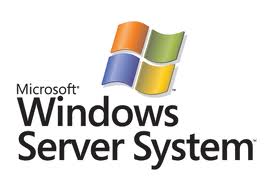|
 |
Windows Server
Virtualization |

Virtualization
Until recently, most of the servers in my setup hosted
single functions, such as Domain Services, DFS or single applications. I decided
that I wanted to see if
virtualization offered any advantages for my home setup, so
I am now on a journey to explore its use in my home environment.
There are far better resources on the web (Google is your friend!)
that cover the subject of virtualization than my pages here, but I have
made a few notes, mainly as a learning exercise for me, that others may
find useful, so FWIW, here you go . . .
Hypervisors are broadly defined as two types :-
- Type 1, where the hypervisor runs directly on the system
hardware - so called, "bare-metal" hypervisors, and
- Type 2, where the hypervisor runs on a host operating system
that provides hypervisor services
Recent versions of Windows Server have a Hyper-V Type 1 hypervisor
edition as well as a Type 2 hypervisor that can be installed as a server
role. Microsoft makes the Hyper-V Server available for FREE! The Windows
2012R2 Hyper-V was available for download until March 2020, when it was
retired. Since then, versions of Hyper-V Server built on Windows Server
2016 and 2019 continue to be available. Given the age of my hardware,
the 2012R2 version seemed to be the most appropriate for me to try.
The decision on whether to use a Windows Type 1 or a Type 2 hypervisor is
influenced by a number of factors, including :-
- Cost - the Type 1 hypervisor is available for free (though the
guest OS(s) do need to be licensed)
- Security - the Type 1 hypervisor resembles Server Core, it does
not have a
GUI
and is less susceptible to attack
Another consideration is around hardware configuration and monitoring
of the physical server hardware. HP ProLiant servers have a large suite of
hardware configuration and monitoring programs available, these must be
installed on the base server and are much easier to use when the full
version of the server, with GUI, is being used. (more
details here)
Windows Hyper-V
For my first foray into the world of virtualization, I chose to use the Type 1 hypervisor, installed on ProLiant DL360
G5 hardware.
After some initial success, it became clear that the resources
available on the hardware that I was using was going to severely limit
the number of virtual machines that I could run when installing the most
recent server operating systems such as Windows Server 2016 and 2019 and
a hardware upgrade was going to be needed.
VMware ESXi
I managed to pick up a couple of more powerful, but still quite old,
ProLiant Generation 7 servers for a very good price that were intended
to help me migrate to more capable hardware. The only problem with these
servers was their limited number of drive bays. They were the 4 bay
version and not easily upgradeable to 8 so I was worried about the lack
of affordable disk space. However, the servers had internal USB and SD
card slots in which a full version of VMware's ESXi type 1 hypervisor
could be installed, allowing all of the hard disk bays to be used for
Virtual Machine data stores.
When I bought the servers, the seller also supplied a copy of the HP
custom build of ESXi for the machines. ESXi can also be installed for
free, and this persuaded me to try out VMware. When ESXi is first
installed, the full suite of features are enabled for 60 days in
"evaluation" mode, if the software is not licensed after that time, if
reverts to the free version which only allows a very limited subset of
the features to work, but the hypervisor and guest OSs continue to
function.
|